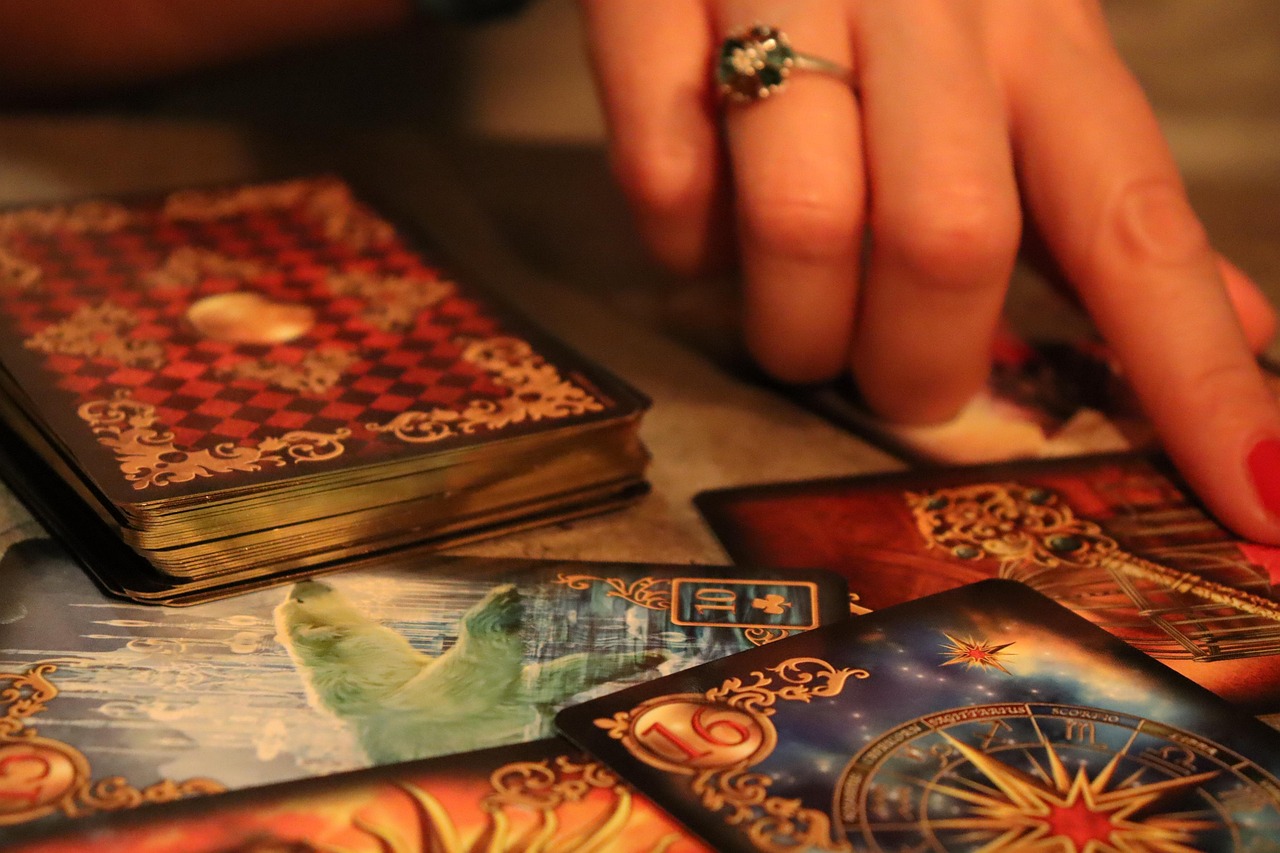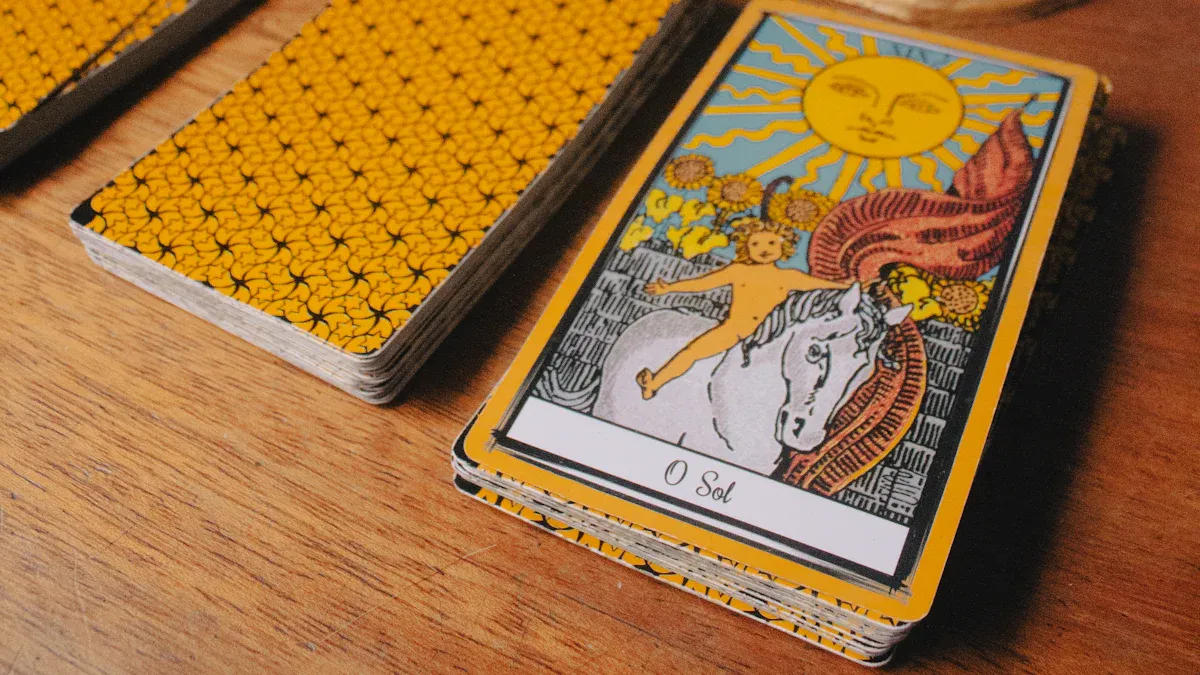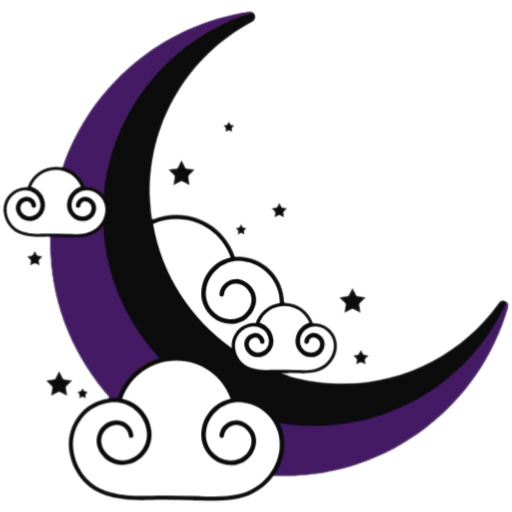
Have you ever felt confused by tarot card pairs? You’re not alone. These pairs can give deep insights and tell stories, but they might seem hard to understand at first. Each tarot card has its own meaning with symbols and pictures. Together, they help you connect to your inner thoughts and reveal hidden feelings and ideas. This guide, which includes a tarot card combinations list, will help make it simple. With easy tips and a clear guide, you’ll feel confident about reading tarot card pairs. Let’s start and make it easier!
Key Takeaways
Begin by learning what each tarot card means. Knowing each card’s story helps you see how they work together.
Practice with small spreads, like three cards. This helps you stay focused and feel more confident.
Pay attention to patterns and themes in the cards. Look at colors, symbols, and feelings to make stories.
Trust your gut when reading card connections. Your feelings can help you find deeper meanings.
Use a tarot journal to write about your readings. Writing helps you see patterns and learn more over time.
Basics of Tarot Card Meanings
To understand tarot card pairs, start with single card meanings. Each card tells its own story. Knowing these stories helps you see how they work together.
Understanding Individual Card Meanings
First, learn what each card stands for. Experts like Etteilla and Antoine Court de Gébelin created ways to explain tarot cards. They wrote books like La Cartonomancie française and Le Monde Primitif. These books give lists to help you understand each card’s meaning.
Source | What They Did |
|---|---|
Etteilla | Created a system to explain tarot cards in La Cartonomancie française. |
Antoine Court de Gébelin | Wrote Le Monde Primitif and used the Marseilles tarot deck for readings. |
Major Arcana vs. Minor Arcana
Tarot cards are split into major and minor arcana. The major arcana has 22 cards about big life events like love or change. These cards show important lessons or shifts. The minor arcana has 56 cards about daily life. They may seem small but show everyday details.
Major arcana connects to big life themes, like the book of Thoth.
Minor arcana focuses on smaller, daily life moments.
The Role of Card Positions in a Spread
Where a card is placed in a spread matters. Each spot has a meaning. A card in the past spot shows past events. The same card in the future spot shows what might happen. This helps you read the cards better. By learning card positions, you can find deeper meanings.
The magic of tarot is in linking card meanings to their spots. This helps you see the full story and understand the messages the cards share.
Key Techniques to Understand Tarot Card Combinations
Finding Themes and Patterns
When reading tarot cards, start by spotting patterns. These patterns can guide your reading. For example, bright colors or symbols like stars may show hope. Darker cards or swords might mean problems or struggles.
Notice numbers, symbols, or the mood of the cards. For instance, The Moon and The Star together could mean finding clarity in tough times. The Empress with the Nine of Pentacles might show wealth and nature. These patterns help create a clear and meaningful story.
Tip: Missing cards can matter too. If there are no emotional cards like Cups, it might mean feelings need attention.
Seeing How Cards Connect
Cards in a spread work together to tell a story. For example, The Tower followed by The Star shows moving from chaos to hope. Death with The Fool might mean an ending leads to a new beginning.
Check how major and minor arcana cards interact. A major card like The High Priestess may show intuition. A minor card like the Eight of Pentacles could show how intuition helps in work. These links make your reading deeper and more interesting.
Note: Trust your gut when finding card connections. Sometimes, your feelings reveal hidden links between cards.
Using Context to Guide Meanings
Context changes how you read tarot cards. A card’s meaning depends on its position or the question asked. For example, The Lovers in the past spot might show an old relationship. In the future spot, it could mean a new romance.
A 2009 study showed many people use tarot for self-reflection. This means cards often help you see your life differently. If you feel stuck, a spread might show where to act or let go.
Insight: Always think about the question behind the reading. This helps you give useful and clear insights.
Easy Tarot Combinations for Beginners

Learning tarot card combinations doesn’t have to be hard. Some pairs are simple to understand and can boost your confidence. Let’s look at three easy combinations that give clear messages.
The Lovers and The Devil
This pair teaches about relationships and choices. The Lovers stands for love, harmony, and strong connections. The Devil shows challenges like bad habits or unhealthy ties. Together, they tell a story about love and self-awareness.
Meaning Type | Explanation |
|---|---|
Positive | Shows a loving bond with respect, trust, and shared goals. |
Negative | Points to a harmful relationship with control or bad habits, needing change. |
When these cards appear, ask: Is this relationship good or bad? This pair helps you think about balancing love and personal freedom.
The Tower and The Star
This pair is about big changes. The Tower means sudden chaos or surprises. The Star brings hope, healing, and new ideas. Together, they remind you that tough times lead to better days.
The Tower and The Star show change and hope. The Tower means sudden shifts, while The Star gives inspiration. Together, they remind you that even in hard times, hope is always there.
If life feels hard, this pair tells you to accept change. Trust that better things are coming.
Three of Swords and The Sun
This pair might seem odd at first. The Three of Swords shows sadness or heartbreak. The Sun stands for happiness, success, and joy. Together, they mean healing and happiness after pain.
This reminds you that sadness doesn’t last forever. The Sun shows you can heal and find joy again. This pair is a great example of how tarot can guide you through tough times.
These simple tarot pairs are great for beginners because they’re easy to read. Many readers use these techniques to succeed. Books like Easy Tarot Combinations: How to Connect the Cards for Insightful Readings give helpful tips to make learning tarot easier.
Overcoming Challenges in Tarot Card Combinations
Handling Too Many Cards at Once
Do big spreads feel overwhelming? You’re not the only one. Many readers find it hard to read when there are too many cards. The trick is to keep it simple. Focus on just a few cards that catch your eye. Look for repeating symbols, colors, or ideas. These can help you understand the message better.
“Don’t stick to strict rules. Try new ways and see what works for you.” This advice encourages you to try spreads of different sizes. If a big spread feels too much, break it into smaller parts. For example, look at one row or column first. This makes the reading easier and less stressful.
Tarot is about your personal connection. Trust yourself to choose how many cards to use and how to read them.
Solving Confusing Card Meanings
Sometimes, cards seem to say opposite things. One card might show hope, while another shows trouble. How can you figure this out? Start by thinking about the question you’re answering. The card’s position in the spread can also give hints.
Here are three ways to handle mixed meanings:
Intuitive Reading: Listen to your feelings. What do the pictures tell you?
Systematic Study: Use traditional meanings and history for guidance.
Comparative Analysis: Compare the cards to your beliefs or past experiences.
Confusing cards often have hidden meanings. Instead of seeing them as problems, think of them as chances to dig deeper into the reading.
Growing Trust in Your Instincts
Confidence comes with practice. Spend time learning about your tarot deck. Study the pictures and meanings of each card. Meditation can help too. A calm mind makes it easier to trust your first thoughts during a reading.
Practice often. Start with small spreads, like three cards, to improve your skills. Write down your readings in a journal and think about what they mean. Over time, you’ll see patterns and understand tarot combinations better.
A 2009 study showed many people use tarot to think about their lives. This means tarot isn’t just about telling the future. It helps you learn about yourself and your choices. Trust your instincts, and don’t worry about mistakes. Every reading helps you get better.
Tips to Boost Your Intuition for Tarot Readings
Starting with Small Spreads
Using small spreads is a smart way to practice. A three-card spread keeps things simple and clear. It helps you focus on the question without feeling lost. Fewer cards make it easier to see how they connect. This builds your confidence and helps you learn each card’s meaning better.
Many people use small spreads when life feels tough. A 2009 study found that tarot is often used for self-reflection, not just fortune-telling. Small spreads can bring comfort and help you understand your feelings and thoughts.
“Tarot isn’t only about predicting the future—it’s a way to learn about yourself,” the study explained. Practicing with small spreads can improve your skills and strengthen your intuition.
Keeping a Tarot Journal
A tarot journal is like your personal notebook for readings. Writing down your thoughts helps you notice patterns and themes over time. It also shows how your intuition grows. After each reading, write the cards, your ideas, and any lessons you learned.
Joan Didion once said, “We tell ourselves stories in order to live.” A tarot journal helps you create stories that explain your life. It’s not just about card meanings—it’s about exploring your feelings and understanding your path.
Journaling can also help your mental health. Studies show tarot can help process emotions and bring clarity. By keeping a journal, you’ll connect more deeply with the cards and find new meanings.
Using Meditation and Visualization
Meditation and visualization are great ways to improve your tarot skills. Meditating for a few minutes daily clears your mind. It helps you focus and listen to your intuition. You can try breathing exercises or guided meditations before a reading.
Visualization goes even further. Imagine stepping into the world of the tarot cards. Picture the colors, symbols, and energy of the deck. This practice helps you connect with your inner wisdom and understand the cards better.
Mindfulness practices like these don’t just help with tarot—they also make your intuition stronger. Over time, you’ll trust your first thoughts more and find deeper meanings in your readings.
Learning tarot card combinations takes time, but it’s rewarding. Begin with small steps and improve slowly. Use a journal to write down patterns and see your progress. Practice often to feel more sure with each reading.
Try using different tarot decks to see new ideas.
Talk with other readers to learn from their thoughts.
Be open to new meanings—they help you improve.
Tarot is about learning and growing. Believe in yourself, and you’ll find deeper meanings in every reading. 🌟
FAQ
What are tarot combination spreads?
These are card layouts where cards work together to tell a story. They show how cards connect and reveal deeper meanings. Use them to explore themes, relationships, or answer specific questions.
How do I know if I’m reading combinations correctly?
Trust your gut! Start by learning card meanings and spotting patterns. If something feels right, it likely is. Keep practicing, and you’ll feel more confident over time.
Can beginners try tarot card combinations?
Yes, they can! Begin with easy pairs like The Lovers and The Devil. Focus on how the cards relate to each other. With practice, you’ll get better at finding connections and making sense of them.
Do I need to remember all card meanings?
No, you don’t. It’s helpful to know the basics, but guidebooks are always there to help. As you practice, you’ll naturally start remembering meanings.
How can I get better at reading tarot?
Practice often with small spreads. Write down your readings in a tarot journal to track your progress. Meditation and visualization can also help you connect with the cards and trust your intuition.


